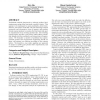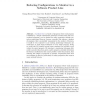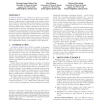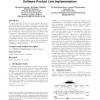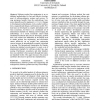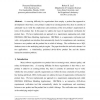AOSD
2009
ACM
14 years 18 hour ago
2009
ACM
Traditional methods characterize a software product line's requirements using either functional or quality criteria. This appears to be inadequate to assess modularity, detec...
RV
2010
Springer
14 years 2 days ago
2010
Springer
A product line is a family of programs where each program is defined by a unique combination of features. Product lines, like conventional programs, can be checked for safety prope...
SPLC
2010
14 years 17 days ago
2010
Product line engineering allows for the rapid development of variants of a domain specific application by using a common set of reusable assets often known as core assets. Variabil...
KBSE
2010
IEEE
14 years 18 days ago
2010
IEEE
A Software Product Line (SPL) is a family of programs. Testing an SPL is a challenge because the number of programs to examine may be exponential in the number of features. Howeve...
KBSE
2010
IEEE
14 years 18 days ago
2010
IEEE
To realise variability at the code level, product line methods classically advocate usage of inheritance, components, frameworks, aspects or generative techniques. However, these ...
JOT
2010
14 years 19 days ago
2010
Many software engineers try very hard not to use the word “reuse” because many methods and tools intended to promote reuse have failed to meet expectations. As soon as they le...
HICSS
2010
IEEE
14 years 22 days ago
2010
IEEE
Abstract: Software product line engineering is an established methodology for fast and effective development of software-intensive systems and services. To reap maximum benefits fr...
RE
2008
Springer
14 years 1 months ago
2008
Springer
We introduce an extractive approach to building a product line's requirements assets. We define the functional requirements profiles (FRPs) according to the linguistic charac...
CLEIEJ
2004
14 years 2 months ago
2004
This paper presents a component-based product line for workflow management systems. The process followed to design the product line was based on the Catalysis method. Extensions w...
ASE
2005
14 years 2 months ago
2005
A recurring difficulty for organizations that employ a product-line approach to development is that when a new product is added to an existing product line, there is currently no a...
